Get 80% performance of the PzH-2000 for 50% of the budget. Currently, most Western armed forces face a range of challenges. At the same time, most of them, have undertaken dramatic defence modernization programs. Many investment decisions are hereby implemented to leverage high technology for a downsized force. Although nowadays, with reduced defence spending and uncertainty regarding missions and tasks, the majority is poorly positioned to introduce new next-generation weapon systems. Instead, they’re searching for upgrade solutions to keep current equipment up to the job for decades to come. This trend fits perfect the large population of the proven M109 155mm Self-Propelled Howitzer (SPH) world-wide. Therefore in Germany, Rheinmetall Waffe Munition (RWM), a subsidiary of Rheinmetall DeTec group is beating the drum for their M109-L52 Upgrade.
Marketing the M109-L52 Upgrade is aimed at customers who can’t afford new artillery systems like the German PzH-2000 or the British AS90 howitzer but have the M109 in service, or can easily obtain them from surplus stocks. In that process, Rheinmetall DeTec is able to draw on the expertise of Rheinmetall Landsysteme, combining it with the know how of RWM to reprocess old M109 howitzers, salvage reusable chassis/turret and components and integrate all M109-L52 chassis/automotive upgrades into the refurbished chassis/turret.
Artillery requirements: The M109 has had a long and distinguished career that has seen it (with close to some 5000 still in service) become the most numerous self-propelled weapon in existence. However range, lethality, reliability, speed and mobility are all limitations of this 1950’s design, as was the lack of onboard navigation/location and nuclear, biological and chemical protection for the crew.
Nowadays the focus has shifted dramatically to Network Centric Warfare technology with faster, more flexible battlefield systems that can effectively engage the enemy at greater standoffs in an increased and more fluid battle-space.
In that regard modern Field Artillery, demands enhanced survivability and sustainability, improved protection, and due to increased manoeuvrability more ‘situational awareness’ of the same battle-space, and last but not least the ascendancy of lethal firepower. Requirements of which the M109 is no longer capable of meeting.
Most of the in service M109’s are in the configuration that carries the 155mm/39-calibre ordnance. Although some users have 155mm/47-calibre guns (Switzerland and the United Arab Emirates), others wants to upgrade to 155mm/52-calibre systems, which is considered as the baseline for any future artillery procurement.
To meet these emerging international artillery requirements, RWM developed this comparatively low-cost modernization package of modern artillery technology.
Which actual started as a joint venture with RDM-Technology & Defence, an in the Netherlands based company. But after it went bankrupt, it’s now a private venture of Europe’s leading design, development and production company for large calibre weapon systems and ammunition.
Three levels: Structural modifications have been made to the whole system to keep stresses and firing loads at/on basically at the same level as the M109-A3/5 model. State-of-art components are used to achieve dramatic improvements in three basic levels in order to improve the system’s overall performance. These levels are accompanied by an extensive list of additional options, enabling the system to be further tailored to meet specific customer requirements.
‘Level 1’ is the basic upgrade configuration and comprises all the necessary improvements for a successful integration of the new 155mm/52-calibre main armament, built by RWM, which meets the NATO Joint Ballistic Memorandum of Understanding. Structural modifications are being made to chassis and turret to meet higher firing loads. A new roof bracket, a new Elevation and Balancing cylinder and new accumulators for improved hydraulics are installed. The 155mm/52-calibre ordnance is installed in a modified cradle, where a strengthened elevation bracket and an enlarged bearing distance keep stresses at the same level as the A3 version. The new muzzle brake even reduces recoil with 50 percent compared with the 155mm/39-calibre ordnance. The chassis modifications includes an improved suspension and drive train.
‘Level 2’ enables the howitzer to perform autonomous operations in both a traditional role, as well as in a spread battery with separation distances of up to 1 kilometre. This configuration comprises all the improvements of ‘Level 1’, plus embedded prognostics and diagnostic capabilities, a remote controlled travel lock, inertial and GPS navigation, automatic weapon pointing, an integrated muzzle velocity radar system, an auxiliary power unit and an integrated fire control system. The latter is capable of fire mission planning and performing the necessary ballistic computation. Particular the integration of the LINAPS (Laser Inertial Artillery Pointing System) digital gun sight, dramatically increases the accuracy and reduces the time to perform a firing mission. In fact, LINAPS is a gun mounted, high grade, ring laser gyro inertial navigation unit specifically designed for artillery pointing and survey applications which allows the operation of artillery in all weather conditions, day and night. In normal operation the LINAPS equipment functions as an inertial navigator using data from an embedded P(Y) code GPS receiver and a vehicle odometer to provide an integrated navigation solution with the highest available accuracy. The equipment is also capable of providing accurate navigation without GPS by the integration of inertial and odometer data. To increase rate-of-fire and reduce crew fatigue it comprises a Ammunition Handling Kit (AHK) with a new drawer magazine (that exactly fits into the existing turret bustle) for 24 fused projectiles and charges and an additional 10 rounds in floor rackets; a projectile hoist; an electrically driven projectile rammer and two different projectile chutes. With the AHK integrated, the crew benefits from improved stowage of projectiles and all kind of charges; virtually “weightless” projectile handling in the crew compartment; automatic projectile ramming and a semi-automatic primer feed system and accelerated ammunition re-supply.
The electrically driven ramming device is integrated on the cradle shield and operates between -2.5° and approx. +43° of elevation, while the elevation range for firing is not limited by it. The ramming cycle is less than seven seconds with a minimal need for precision of adjustment due to the push ramming principle. The AHK modular design enables made-to-measure solutions for the different M109 versions currently in service worldwide. An improved engine (upgrade to 450 hp), as well as a microclimatic conditioning system that provides either heated or cooled NBC-filtered air to the crew is installed.
The ‘Level 3’ configuration enables the crew to perform rapid deployment and autonomous “shoot and scoot” operations in a wide spectrum of tactical scenarios. This configuration comprises also all the improvements of Levels 1 and 2. From this Level, the “big gun” can operate independently. From on the move, it can receive a fire mission, compute firing data and on-board ballistic solutions of fire missions, providing accurate position location, azimuth reference, select and take up its firing position, automatically unlock and point its cannon by use of a fully automatic gun laying system, fire and move out – all with no external technical assistance. In addition it can incorporate a state-of-the-art C4I system to be plugged into a Battlefield Management System environment for better ‘situational awareness’ and joint operations with other units.
Firing a tooth-rattling 6 round burst (to rain steel down on enemy targets at a moment’s notice) from the move in 45 seconds, and move out within 3 minutes gives the Howitzer a “shoot and scoot” capability. This ability to rapidly emplace and fire allows it to move more frequently so that it’s susceptibility to counter-artillery fire is significantly decreased. The capability of firing up to 8 rounds/min (burst) or 3 rounds/min (sustained) demonstrates its ability to reach out and touch someone with a barrage of bone-jarring blasts that sent rounds screaming downrange and impacting on targets up to 40 kilometres away. In the meantime the crew remains in the vehicle throughout the mission.
The third retrofit level additionally features increased survivability characteristics such as day/night operability, secure voice and digital communications, automatic fuse setting equipment of the fused rounds in the drawer magazine, improved ergonomics and safety through add-on armour and explosion suppression. The all-welded aluminium hull and turret can be provided with internal spall liners and supplemental appliqué passive armour for higher battlefield survivability.
With a combat weight of merely 28 tons, it not only achieves extraordinary mobility on the ground but can also be airlifted. Increased ground mobility can be achieved by installing a new Euro III diesel Powerpack and redesigned suspension with hydro-pneumatic struts in lieu of standard shock absorbers.
Big gun: The entire retrofits main feature is a new 52 calibre cannon. The 8.06-metre-long, 60-groove barrel with a chamber volume of 23 litres shares extensive ballistic commonality with the PzH-2000 howitzer and thus is compatible with the same firing table. The 52 calibre cannon is available with an almost new developed rotating revolving or a wedge type breech. The new ordnance can be fired with modern modular propellant charge systems, including a full range of RWM’s developed generation of artillery ammunition such as DM111 (for ranges up to 30.3 km), the DM 642 family (up to 27.1 km) and the DM 652 family (up to 34.5 km) as well as the RH 40 Base-Bleed round (up to 40 km), the new MS-smoke shell DM125 (up to 27.1 km) and the sensor-fused DM702 SMArt 155. The latter will be able to destroy semi-hard and hard targets responsively and precisely under all weather and operational conditions. Because SMArt is so effective, it will reduce the logistical burden as compared to conventional munitions. With its ability to attack targets precisely, it will minimize collateral damage.
Artillery influences battle mainly through the effects of its munitions. Combined with accurate target location and updated firing data. Taking into account other elements involved in executing fire missions, artillery rounds after adjustment can accurately impact within 50 meters of a target location. Those impacting within 30 meters of a target have the same desired effects as a direct hit.
Today’s Field Artillery: Artillery has inflicted more casualties than any other weapon system on post-19th-century battlefields. More specifically, mortar and artillery shells killed more soldiers during last century’s major wars than any other system. Even during the Vietnam war, where North Vietnam lacked extensive artillery, 65 percent of all wounded U.S. forces resulted from artillery or mortar fragmentation. More recently, Field Artillery proved its role on the battlefield in Operation Desert Storm, Chechnya and during Iraqi Freedom. When questioned about artillery’s role during Operation Desert Storm, Deputy Secretary of Defence Paul Wolfowitz responded that ground-based artillery systems, rockets, and howitzers were much more devastating to Iraqi artillery than anything that could have come from the air. Arguably, the best way to destroy artillery is with artillery.
Russia, known for its technological advantages in the area of precision munitions, nevertheless extensively used artillery during the second Chechnya War. Seventy to ninety percent of indirect fires the Russians employed against terrorist targets were from ground-based artillery.
During Operation Iraqi Freedom, artillery proved pivotal. On 25 March 2003, heavy sandstorms grounded supporting aircraft while artillery provided fire support for Marines during heavy fighting around Nasiriya. In the northern Kurdish area of Iraq, Iraqi troops initially sought protection from allied air attacks when vapour trails from U.S. aircraft gave them warning. An unexpected bombardment from two howitzers of the 173d Airborne Brigade proved key to breaking the will of the entrenched Iraqi soldiers.
Put to the test: Throughout the year 2005 the system (in a Level 1 configuration against a stringent set of whole life criteria) will be put to the test during extensive qualification and evaluation tests such as: stress and forces; vehicle movement; breech and cannon to deliver a pre-qualified M109-L52 by the 4th quarter of 2005. System and weapon parts with preliminary ‘Life Crew Clearance’ ends with a life firing demonstration by the end of 2005.
Apart from qualifying the individual components, the upgraded howitzer has already been tested with all the additional features integrated in the howitzer. The results have clearly shown that the basic system is perfectly capable of absorbing the effects of the upgrading with a long range 52 calibre cannon, including the various added systems to the basic system.
Conclusion: During the Second World War, artillery has earned its reputation as “The Greatest Killer and Queen on the Battlefield”. This was built on its ability to mass fires and respond with rapid, accurate fires for manoeuvre plus the belief that it could destroy any target on the battlefield. The M109-L52 in the top-of-the-line configuration, which is actually a legacy from the original 1963 model, should be capable of living up to this reputation. All together this Upgrade aims to close the technology gap and to ensure it’s lifespan continues on as a front line artillery piece, not only making it digital, but more lethal as well.



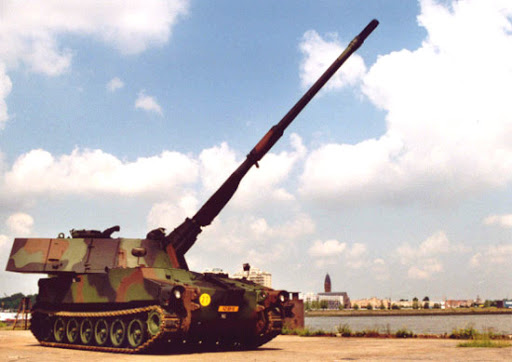

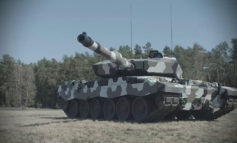
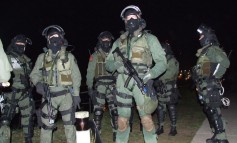
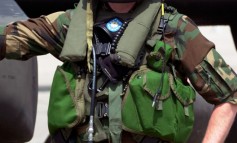

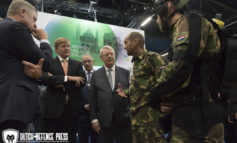
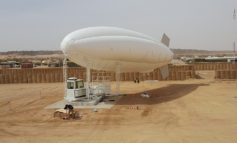



Leave a Reply